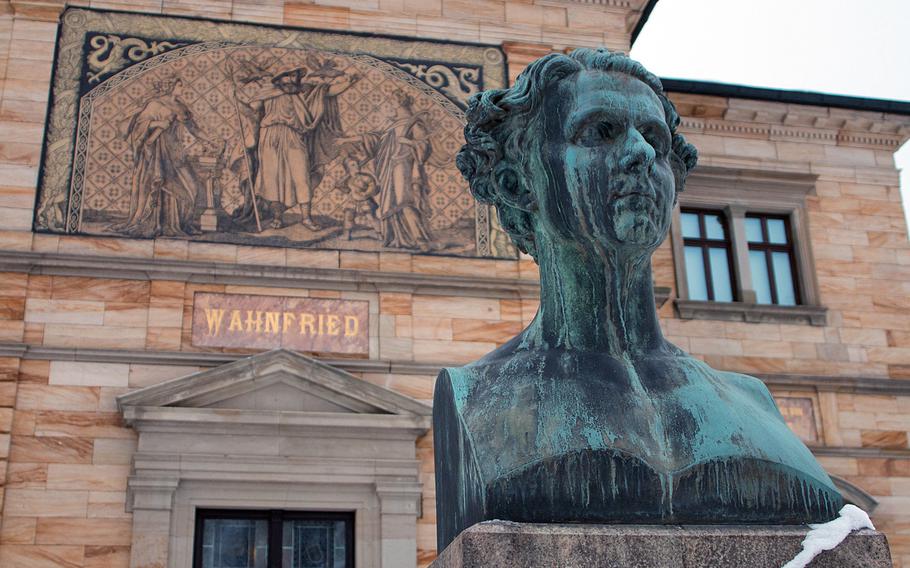
A bust of King Ludwig II, one of Richard Wagner's biggest fans, sits outside the compose'rs house-turned-museum. (Michael S. Darnell/Stars and Stripes)
Don’t let the frigid temperatures get you down. You can still get out and explore and take refuge from the cold in the warmth of a museum. When it comes to seeking a place to soak up local culture, Bayreuth, Germany, is worth a visit.
Roughly 45 minutes from the Grafenwoehr training base, the city has become practically synonymous with German composer Richard Wagner, whose operas — The Flying Dutchman, Parsifal and The Ring of the Nibelung among them — are performed every year at the Bayreuth Festival.
The Richard Wagner Museum, located in the heart of town, has recently been renovated and expanded. It encompasses the home where Wagner lived out the last decade of his life, Wahnfried, and an adjacent home where his son, Siegfried, lived. The western wing is focused largely on the impact of the Bayreuth festivals. Visitors can take a look at historical costumes, musical instruments and intricately designed light boxes showcasing famous opera set pieces.
There are sitting rooms where visitors can listen to music performed in different eras. One of the most relaxing and inspiring moments during my visit was listening to a rare recording from the early 20th century. The scratches, crackles and lo-fi audio took me back in time in a way that static displays never could.
The other two buildings are dedicated more to the life of Wagner and his son. In the Wahnfried House, all three stories are filled with personal artifacts.
Here, too, are accounts of Wagner that portray a man deeply enmeshed in the politics of the time and who had not an insignificant amount of trouble with lovers and creditors.
The third building, which eventually became the residence of Siegfried — himself a prolific composer — delves into the Wagners’ links to Hitler and the Nazis.
Most of the history is told through video screens embedded into the floors, but there are signs in English that speak about the personal relationship between Siegfried’s wife, Winifred, who joined the Nazi party in 1926, and Adolf Hitler, who stayed at the house on his festival visits from 1936 to 1940.
Signs that describe many of the displays are written in both German and English, but quite a few pieces are described in German only. A complete tour of all three buildings should take an hour to 90 minutes.
There is plenty of time to hit the beer tents and food festivals when the snow melts. Until that time, though, I highly recommend taking a quick trip to Bayreuth to check out the Wagner museum.